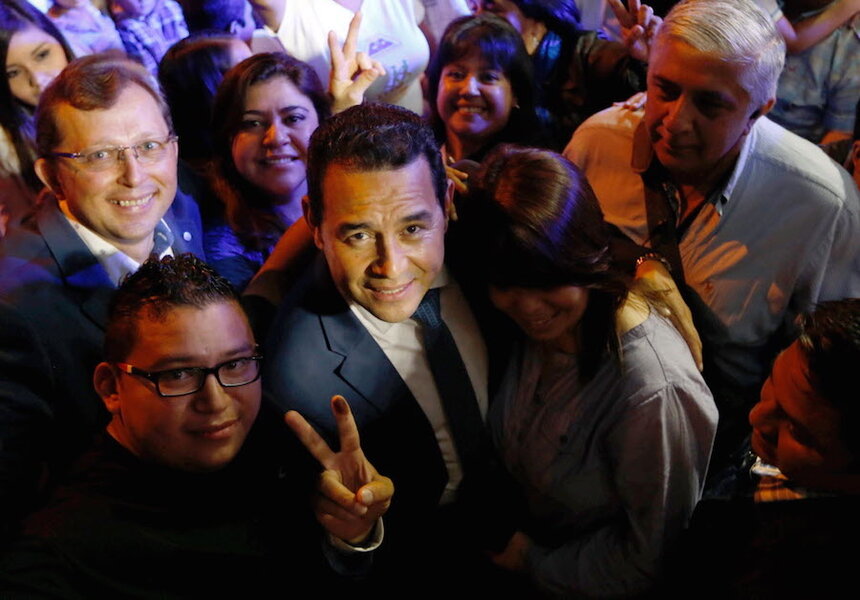Fearless Guatemala's lessons for Latin America
Loading...
When peaceful protests against corruption broke out in Guatemala last April, little did the youthful demonstrators know they would eventually help force the country’s president, Otto Pérez Molina, to resign Sept. 2 under charges of fraud. At the first protest, many of them wore masks to avoid retaliation from the powerful elite that reigns in the Central American country. By the second one, however, the masks were off. Many more people, from business leaders to indigenous groups, had joined in, all demanding honest and transparent government. By late August the crowds in the capital’s main plaza had reached more than 70,000.
The country’s famous Mayan activist Rigoberta Menchú, winner of the 1992 Nobel Peace Prize, cites the example set by the first protesters. “The youth of Guatemala ... have shown that it is possible to defeat fear,” she told Democracy Now! news syndicate.
The nation of some 16 million people may also be setting an example for other Latin American countries, such as Brazil and Mexico, where exposure of high-level scandals by courageous investigators are shifting attitudes against a culture that assumes official corruption is the norm.
One key to the shift is the peaceful nature of recent anti-graft protests in the region, which are aided by the ability of social media to organize people around affirmative goals. “It is not a violent Guatemala that has removed Otto Pérez, it is a peaceful Guatemala that has removed Otto Pérez,” said Ms. Menchú.
Another key has been the diverse nature of the crowds. This dispels the notion of protests as driven by one political faction rather than a universal appeal for good governance.
Too many people in Latin America are still resigned and passive toward corruption or they vote in crooks who promise them benefits, wrote Alejandro Salas, regional director for the Americas at Transparency International, in a blog last year. “We should ... be the first to reward honest actions and reject those who engage in corruption,” he stated.
The drive of Guatemalans to clean up their politics was aided by the creation of a United Nations investigative commission, known by its Spanish acronym CICIG, that has probed large-scale crimes in Guatemala since 2007. Its work has felled a number of top leaders, especially after it uncovered a scheme allegedly head by the president to divert revenue from import tariffs.
Yet even the head of this UN commission, Colombian Iván Velásquez, indirectly attributes his successes to the people. He recently tweeted a statement by former Uruguayan President José Mujica: “There are no saviors or wizards in the world; there are only collective causes.”
One clue to a shift in the region can be found in a survey last year by the Latin American Public Opinion Project at Vanderbilt University. The poll found more than two-thirds of people in the Americas who have recently had to pay a bribe also said it is never justifiable to pay a bribe.
“In other words, most citizens in the Americas reject bribery despite its prevalence in society and politics even as they may be in a position where they feel compelled to pay a bribe,” the survey stated.
Long silenced by fear – or the fear that nothing would change – Guatemalans have shown how to tap a desire for civic ideals to overcome their fears. Changing the system or their leaders in coming years may still be difficult. Many institutions need basic reform. A final presidential election, expected Oct. 25, could be another pivotal moment. But they have crossed an important threshold together, one that should inspire an entire continent.





